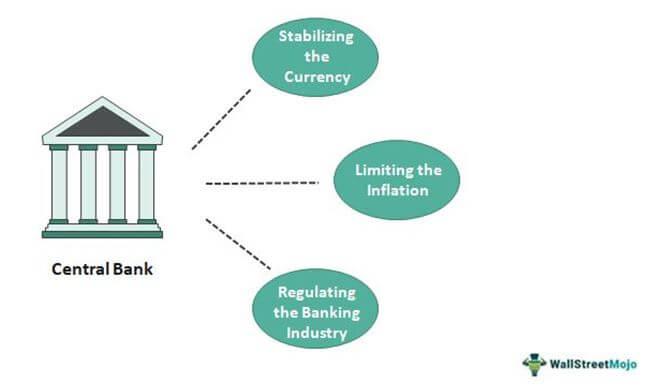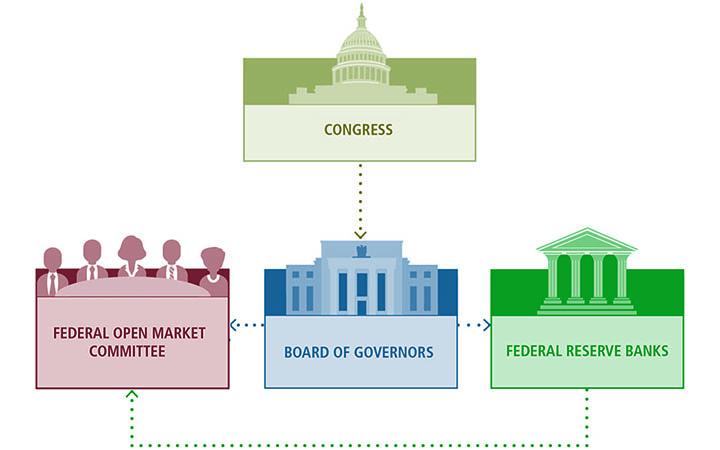Seizing the Moment: Central Banks at the Crossroads of Change
In a world defined by rapid transformation and unprecedented challenges, central banks find themselves at a pivotal juncture. As the architects of monetary policy, these institutions are tasked with navigating the delicate balance between fostering economic stability and embracing innovation in a landscape marked by volatility. From the rise of digital currencies to the pressing demands of climate change, the traditional frameworks of central banking are being tested like never before. In this article, we explore how central banks are harnessing this moment of upheaval not just to react, but to proactively shape the future of global finance. Join us as we delve into the strategies, decisions, and philosophical shifts that are redefining the role of these crucial institutions at a time when their influence has never been greater.
The New Dynamics of Monetary Policy in an Evolving Economy
The landscape of monetary policy has dramatically transformed in recent years, as central banks navigate an intricate web of challenges and innovations. In an era defined by global interconnectedness, technology, and evolving economic realities, traditional policy frameworks are being scrutinized and adapted. Central banks now face a pressing need to balance various objectives such as inflation control, employment stabilization, and financial market integrity. This necessitates an examination of new tools and approaches, including negative interest rates, quantitative easing, and forward guidance, each introducing its own set of complexities and risks. As central banks consider these strategies, their role extends beyond mere economic players; they now function as vital players in safeguarding broader financial stability.
Furthermore, the increasing influence of digital currencies and fintech innovations is reshaping the monetary policy framework. In light of this, central banks are exploring the potential benefits and challenges posed by central bank digital currencies (CBDCs). This shift not only impacts domestic monetary policy but also has significant international implications, creating a scenario in which cooperation and coordination among global central banks become crucial. The table below highlights key factors central banks must consider in this new dynamic:
| Factor | Consideration |
|---|---|
| Inflation | Balancing price stability with economic growth. |
| Interest Rates | Adjusting rates in reaction to market signals and global trends. |
| Financial Stability | Mitigating risks associated with new financial technologies. |
| Public Trust | Building trust in the central bank’s capabilities and decisions. |

Navigating Inflationary Pressures: Strategies for Central Banks
In a world increasingly shaped by volatile economic conditions, central banks find themselves in a delicate position, grappling with inflationary pressures that threaten the stability of financial markets. Effective strategies are essential to navigate this landscape, and adaptation is key. Leading economists suggest a multifaceted approach that includes:
- Targeted Interest Rate Adjustments: Gradually altering interest rates can influence borrowing costs, managing consumer spending and investment.
- Clear Communication: Transparency regarding monetary policy intentions helps to set expectations and stabilize markets.
- Asset Purchase Programs: Engaging in quantitative easing to bolster liquidity can support economic growth during downturns while being mindful of potential inflationary fallout.
- Macroprudential Regulations: Ensuring that financial institutions withstand shocks helps maintain systemic stability.
Particularly noteworthy is the importance of international collaboration among central banks. Given that inflation is a global phenomenon, coordinated efforts can fortify domestic strategies, creating a cohesive response to shared challenges. Consider the following table highlighting recent initiatives taken by major central banks:
| Central Bank | Recent Initiative | Objective |
|---|---|---|
| Federal Reserve | Gradual Rate Hikes | Combat Inflation |
| European Central Bank | Asset Purchase Tapering | Reduce Market Liquidity |
| Bank of England | Forward Guidance | Manage Expectations |
| Bank of Japan | Negative Interest Rates | Stimulate Spending |

Digital Currencies and the Future of Financial Systems
The rise of digital currencies presents unprecedented challenges and opportunities for central banks, heralding a potential paradigm shift in the structure of the global financial system. As these institutions weigh the implications of issuing their own digital currencies, often referred to as Central Bank Digital Currencies (CBDCs), they find themselves grappling with a myriad of questions regarding monetary policy, regulatory frameworks, and financial stability. Central banks must evaluate the impact of innovation on traditional banking models and assess how digital currencies can coexist with existing fiat currencies, in addition to understanding the broader implications for cross-border transactions and the international monetary system. *
To navigate this rapidly evolving landscape, central banks are considering several key factors:
- Technological Infrastructure: Assessing the capabilities required to ensure secure and efficient transactions.
- User Adoption: Understanding public perception and willingness to embrace a new form of currency.
- Regulatory Challenges: Balancing innovation with consumer protection and financial stability.
- Global Collaboration: Working with other nations to address the cross-border implications of CBDCs.
In light of these considerations, central banks are embarking on pilot programs and research initiatives designed to explore the functionalities and use cases of digital currencies. This process includes examining the potential for programmability, lower transaction costs, and enhanced financial inclusion that CBDCs could offer. While the full rollout of digital currencies remains on the horizon, the efforts being made showcase a proactive approach to redefining the future of financial systems, prompting discussions about the optimal integration of technology and economics on a global scale.

Balancing Growth and Stability: Recommendations for Policymakers
In the face of unprecedented economic challenges, policymakers must tread carefully as they seek to balance growth and stability. To achieve this delicate equilibrium, central banks should consider the following strategies:
- Adopt Flexible Monetary Policies: Central banks need to maintain a proactive approach, adjusting interest rates and asset purchases based on current economic indicators rather than relying solely on historical data.
- Enhance Transparency: Clear communication regarding policy intentions can help manage market expectations and reduce volatility. Consistent messaging is crucial in building trust and credibility.
- Prioritize Financial System Resilience: Ensuring that financial institutions are robust enough to withstand shocks is paramount. This calls for stringent stress testing and increased capital buffers.
- Foster Collaboration: Engaging in coordinated efforts with fiscal authorities can amplify the effectiveness of monetary policy and ensure a unified response to economic challenges.
Furthermore, adopting innovative tools and frameworks can assist in navigating the uncertainties of today’s economy. Consider the following options:
| Strategy | Potential Benefits |
|---|---|
| Digital Currency Adoption | Enhances efficiency in transactions, reduces costs, and can improve monetary control. |
| Green Financing Initiatives | Promotes sustainable growth and addresses climate-related risks in the financial sector. |
| Macroprudential Policies | Mitigates systemic risks and ensures stability in the financial system. |
Closing Remarks
As we stand at this pivotal juncture, where economic uncertainty intertwines with the promise of innovation, central banks find themselves facing a profound challenge: to adapt and evolve in a rapidly shifting landscape. The decisions they make today will reverberate through markets and communities for generations to come. With the tools of monetary policy at their fingertips and the lessons of the past as their guide, these financial stewards are not merely navigating change—they are shaping the future.
As we move forward, it is essential for policymakers, stakeholders, and citizens alike to engage in the dialog surrounding these institutions and the transformative choices they must confront. The dynamic interplay between traditional frameworks and emerging paradigms offers fertile ground for experimentation, reflection, and growth. By seizing this moment, central banks have the opportunity not only to safeguard economic stability but also to foster resilience in an increasingly interdependent world.
the crossroads of change beckon—not just as a challenge, but as a chance to reimagine the role of central banking in a way that aligns with the aspirations of a diverse and evolving society. As we close this exploration, let us remain vigilant and informed, ready to witness how this journey unfolds and eager to engage with the story that is still being written. The future is not set in stone; it is forged in the choices made today.
